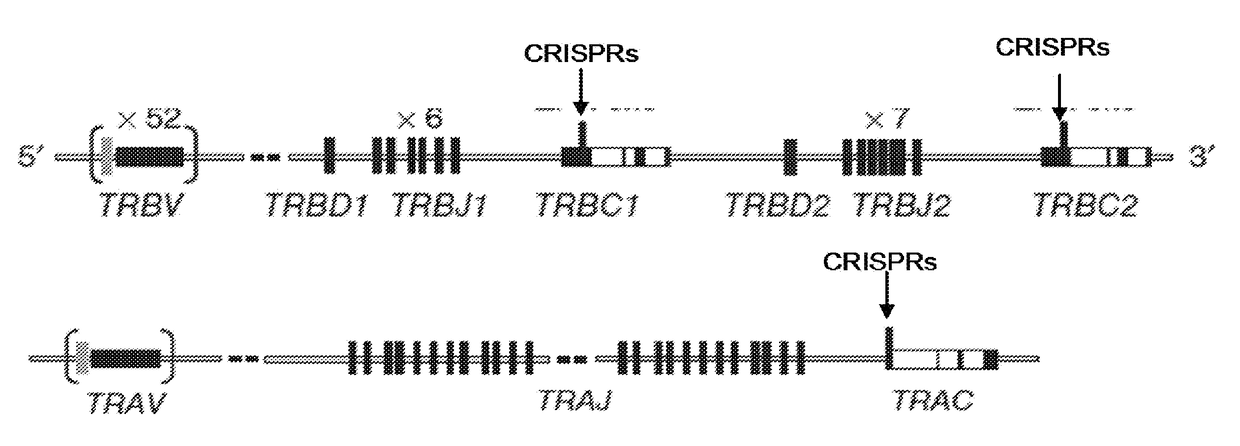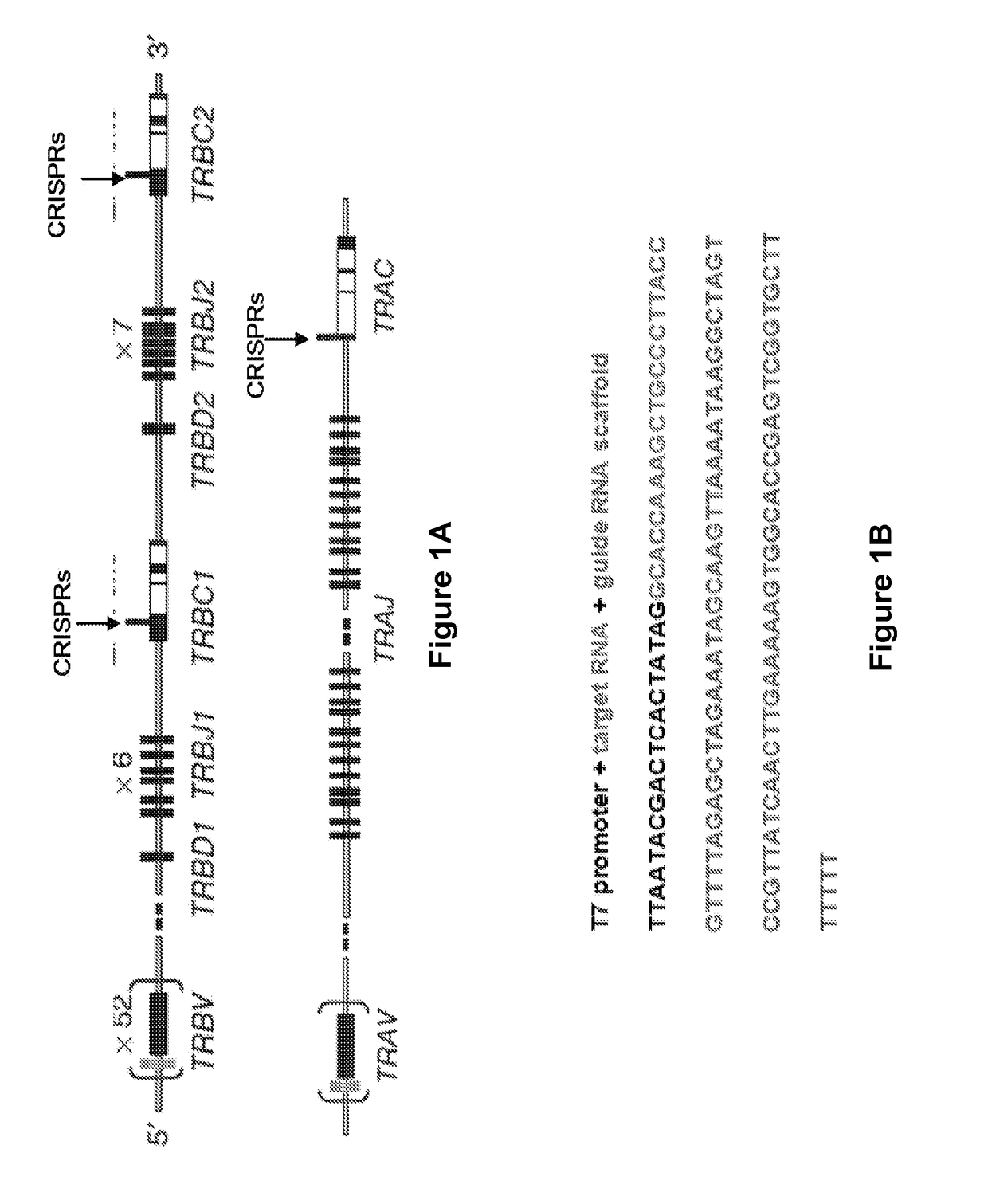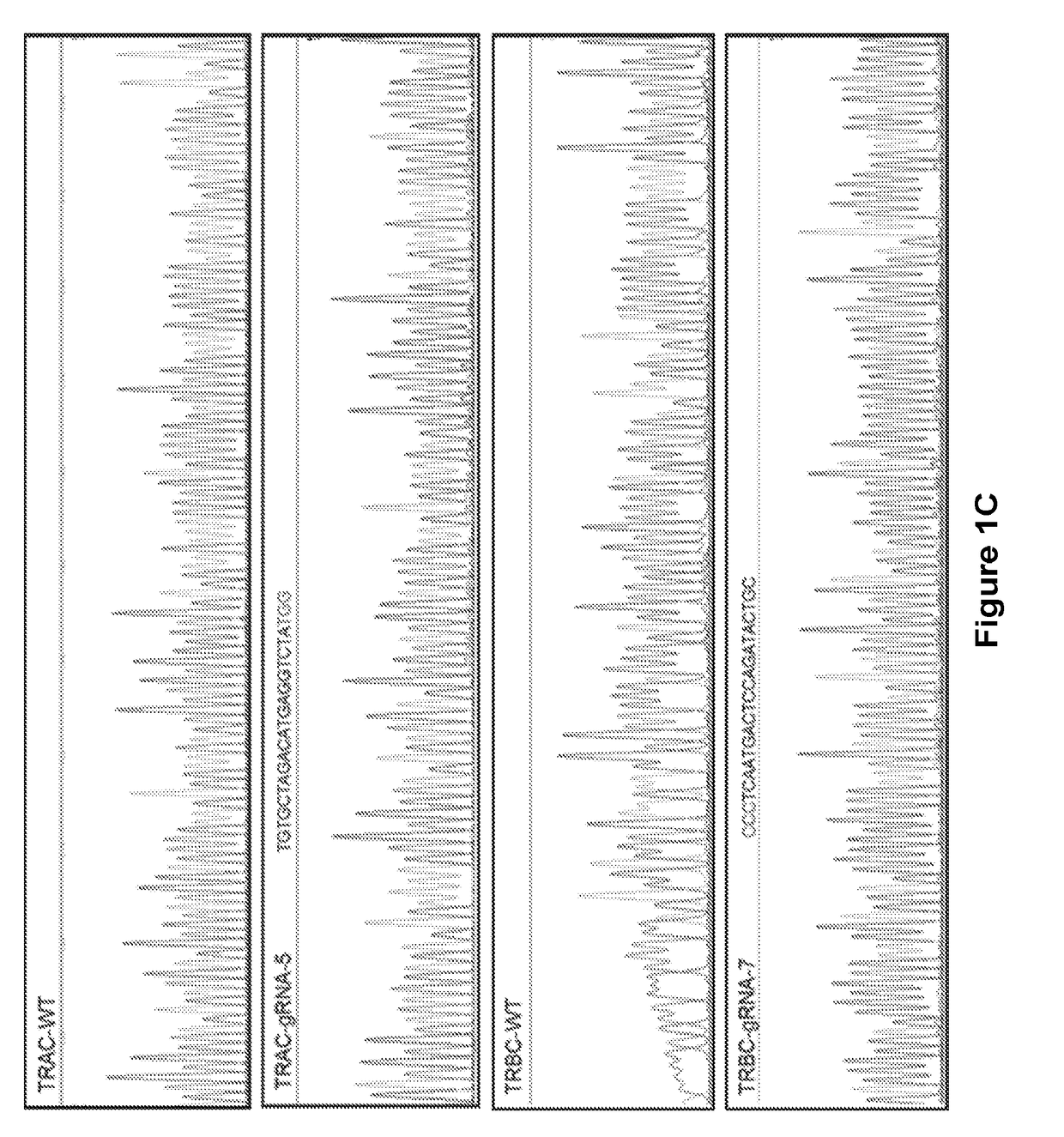Altering Gene Expression in CART Cells and Uses Thereof
a technology of gene expression and cart cells, which is applied in the field of altering gene expression in cart cells, can solve the problems of limited functionality of constructs, limitations to the transient expression of cars, and hampered clinical tcr studies
- Summary
- Abstract
- Description
- Claims
- Application Information
AI Technical Summary
Benefits of technology
Problems solved by technology
Method used
Image
Examples
experimental examples
[0384]The invention is further described in detail by reference to the following experimental examples. These examples are provided for purposes of illustration only, and are not intended to be limiting unless otherwise specified. Thus, the invention should in no way be construed as being limited to the following examples, but rather, should be construed to encompass any and all variations which become evident as a result of the teaching provided herein.
[0385]Without further description, it is believed that one of ordinary skill in the art can, using the preceding description and the following illustrative examples, make and utilize the compounds of the present invention and practice the claimed methods. The following working examples therefore, specifically point out the preferred embodiments of the present invention, and are not to be construed as limiting in any way the remainder of the disclosure.
[0386]The materials and methods employed in these experiments are now described.
[03...
example 1
n of the TCR-CD3 Complex on T Cells Using CRISPR
[0430]Thirteen gRNAs targeting the constant regions of TCR α chain, 10 gRNAs targeting the constant regions TCR β chain, and 10 RNAs targeting the beta-2 microglobin gene. (FIGS. 1A-1C and FIGS. 9A-9D) were developed and tested in 293T cells. Primary human T cells were propagated ex vivo for three days with anti-CD3 / anti-CD28 dynabeads for three days. Since transient expression of CRISPR is sufficient to mediate gene knockout, a “hit-and-run” delivery strategy was developed to transiently express the CRISPRs by utilizing electro-transfer of in vitro transcribed RNA encoding CAS9 and gRNAs (FIG. 2C).
[0431]To measure TCR expression, a mAb specific for CD3 was used, which is only present on the cell surface when TCR antibody is expressed. Six days after electro-transfer, flow cytometric analysis revealed that CRISPRs targeting TRBC eliminated CD3 expression on primary T cells at levels of 13.7 (FIG. 2D) in donor ND147. The efficiency of T...
example 2
t of TCR αβ Negative T Cells
[0437]For future clinical applications, rapid and robust methods for isolating sources of TCR disrupted populations may be utilized. To begin to address this issue, the TCR / CD3neg population was enriched by negative selection using clinically-approved paramagnetic beads and a depletion column. With a single depletion step, the CD3neg population was enhanced to over 99% (FIG. 3A). A CD3neg population could not be enriched from untransfected control cells. Back-to-back depletion steps resulted in >99% enrichment, without skewing the CD4 or CD8 T cell subsets (FIG. 3C). Sequencing results also showed deletions and insertions were introduced to TCR alpha and beta locus after CRISPR modification (FIG. 3D).
Example 3: Generation of HLA-CLASS Ineg T Cells by CRISPR
[0438]To test the ability of CRISPR to knock out HLA-CLASS I expression from allogeneic T cells, gRNAs targeting beta-2 microglobin were designed. The beta-2 microglobin locus could be manipulated by CR...
PUM
| Property | Measurement | Unit |
|---|---|---|
| temperature | aaaaa | aaaaa |
| volume | aaaaa | aaaaa |
| concentration | aaaaa | aaaaa |
Abstract
Description
Claims
Application Information
 Login to View More
Login to View More - R&D
- Intellectual Property
- Life Sciences
- Materials
- Tech Scout
- Unparalleled Data Quality
- Higher Quality Content
- 60% Fewer Hallucinations
Browse by: Latest US Patents, China's latest patents, Technical Efficacy Thesaurus, Application Domain, Technology Topic, Popular Technical Reports.
© 2025 PatSnap. All rights reserved.Legal|Privacy policy|Modern Slavery Act Transparency Statement|Sitemap|About US| Contact US: help@patsnap.com



